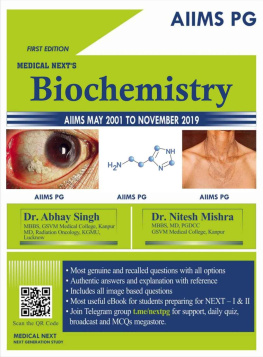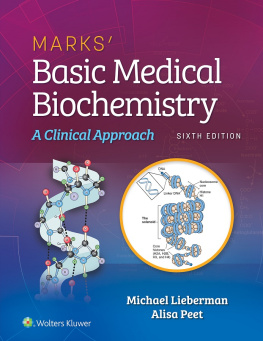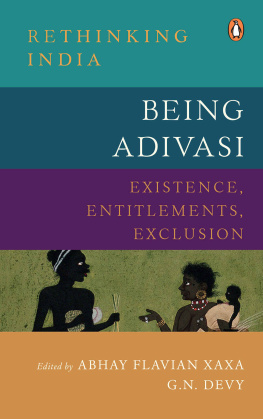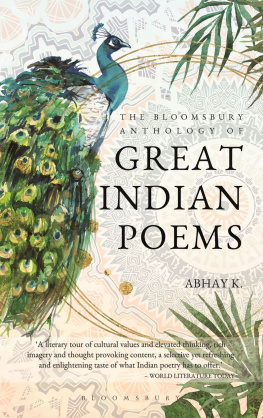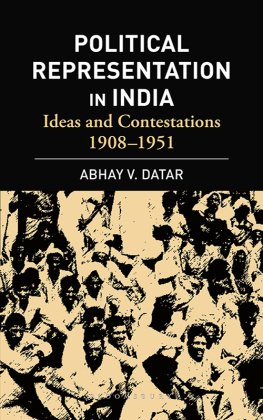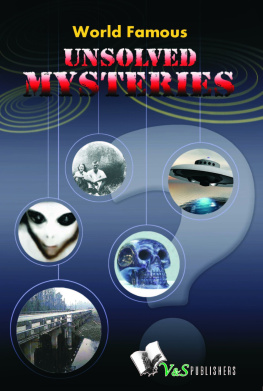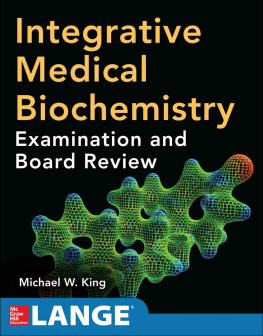Dr Abhay Singh - Medical Nexts Biochemistry : AIIMS May 2001 to Nov 2019
Here you can read online Dr Abhay Singh - Medical Nexts Biochemistry : AIIMS May 2001 to Nov 2019 full text of the book (entire story) in english for free. Download pdf and epub, get meaning, cover and reviews about this ebook. year: 2020, publisher: Medical Next, genre: Detective and thriller. Description of the work, (preface) as well as reviews are available. Best literature library LitArk.com created for fans of good reading and offers a wide selection of genres:
Romance novel
Science fiction
Adventure
Detective
Science
History
Home and family
Prose
Art
Politics
Computer
Non-fiction
Religion
Business
Children
Humor
Choose a favorite category and find really read worthwhile books. Enjoy immersion in the world of imagination, feel the emotions of the characters or learn something new for yourself, make an fascinating discovery.
- Book:Medical Nexts Biochemistry : AIIMS May 2001 to Nov 2019
- Author:
- Publisher:Medical Next
- Genre:
- Year:2020
- Rating:5 / 5
- Favourites:Add to favourites
- Your mark:
- 100
- 1
- 2
- 3
- 4
- 5
Medical Nexts Biochemistry : AIIMS May 2001 to Nov 2019: summary, description and annotation
We offer to read an annotation, description, summary or preface (depends on what the author of the book "Medical Nexts Biochemistry : AIIMS May 2001 to Nov 2019" wrote himself). If you haven't found the necessary information about the book — write in the comments, we will try to find it.
Medical Nexts Biochemistry : AIIMS May 2001 to Nov 2019 — read online for free the complete book (whole text) full work
Below is the text of the book, divided by pages. System saving the place of the last page read, allows you to conveniently read the book "Medical Nexts Biochemistry : AIIMS May 2001 to Nov 2019" online for free, without having to search again every time where you left off. Put a bookmark, and you can go to the page where you finished reading at any time.
Font size:
Interval:
Bookmark:
2020 MEDICAL NEXT All rights reserved. No part of this publication should be reproduced, stored in retrieval systems or transmitted in any form or by any means without the prior permission of the publisher. This book has been published on good faith and every effort is made to ensure accuracy of the material but authors and publisher do not accept responsibility and under no circumstances shall be liable indirectly or directly for any damage that occurs as a result of the use or misuse of the content. The MCQs given in this book are based on the MBBS syllabus which is the basic study material for various exams. Any resemblance to questions is purely coincidental. Published by M EDICAL N EXT First Edition: 2020 Address: 14/48, Yaman, Sahara, JNP, Lucknow, India Websites: mnext.in & edunext.ind.in Facebook: facebook.com/mnextpg/ Instagram: instagram/mexittest Emails: Telegram & Whatsapp: +91 9721446702 Telegram group: https://t.me/nextpg Medical Next On Mission to Reimagine and Revolutionize Medical Education in Era of Continuously Evolving Medical Educational Landscape Medical Next is the first of its kind and premier online institute of India.
The concept behind to start online test conducted by Medical Next is to provide students a feel of the NEET, AIIMS and NEXT examinations. Medical Next puts tons of study materials in medical students pockets and provides access to study anytime and anywhere using Medical Next study tools (Daily quiz, online test and mega-store of MCQS) which ensure students are never far away from books and reach their full potential. Various national and international medical institutions have started online examinations for their graduate and post-graduate courses. Medical Next is online and offline platform to help UG/PG aspirants who are preparing for such online examinations. Medical Next is also getting popularity among poor students because our online tests are pocket friendly. M EDICAL N EXT www.edunext.ind.in and www.mnext.in Contents AIIMS NOV 2003 Q-1.
At physiological pH, the most stable amino acid is: a) Histidine b) Lysine c) Arginine d) Leucine Explanation: Histidine
- Histidine plays unique roles in enzymatic catalysis.
- The pK of its imidazole proton permits it to function at neutral pH or physiological pH as either a base or an acid catalyst.
- Cystinuria is an autosomal-recessive defect in reabsorptive transport of cystine and the dibasic amino acids ornithine, arginine, and lysine from the luminal fluid of the renal proximal tubule and small intestine.
- Calculi are frequently multiple and bilateral, and they often form stag-horns.
- UAG: Amber
- UGA: Opal
- UAA: Ochre
Answer: Stop codon Ref: Harpers Illustrated Biochemistry, 31 st Edition and Page-396 Q-4. In chromatography mass movements of the substances in due to: a) Diffusion b) Electrophoresis c) Osmosis d) Paper chromatography Explanation: Chromatography
- Chromatography is a method by which a mixture is separated by distributing its components between two phases.
- The stationary phase remains fixed in place while the mobile phase carries the components of the mixture through the medium being used.
- Diffusion is the process whereby solute is transferred in a fluid from a point of high concentration to a point of lower concentration.
- Diffusion is a concentration driven mass transfer process in chromatography.
- Gamma-glutamyl carboxylase is an enzyme that catalyzes the posttranslational modification of vitamin K-dependent proteins.
Which end product of citric acid cycle is used in detoxification of ammonia in brain? a) Citrate b) Succinate c) Alfa-ketoglutarate d) Oxaloacetate Explanation: Detoxification of ammonia in brain
- Glutamine is the sole form of transport of ammonia in brain and the major mechanism for the removal of ammonia in the brain.
- Glutamine provides non-toxic storage and transport form of ammonia.
- Glutamine is an amide of Glutamic acid which is formed from alfa-ketoglutarate.
- Dietary triglycerides are transported as part of lipoprotein particles called chylomicrons.
- Triglycerides synthesized in the liver are transported as part of lipoprotein particles called very low density lipoproteins or VLDLs.
Thiamine is not used in which of the following reactions a) Glucose to pentose b) Lactate to Pyruvate c) Oxidative decarboxylation of Alfa-keto amino acids d) Alfa-ketoglutarate to succinyl Co-A Explanation: Thiamine Pyrophosphate Thiamine Pyrophosphate works as a coenzyme in:
- Pyruvate dehydrogenase complex
- Pyruvate decarboxylase in ethanol fermentation
- Alpha-ketoglutarate dehydrogenase complex
- Branched-chain amino acid dehydrogenase complex
- 2-hydroxyphytanoyl-CoA lyase
- Transketolase
- Thiamin triphosphate has a role in nerve conduction; it phosphorylates, and so activates a chloride channel in nerve membrane.
- Affinity chromatography exploits the high selectivity of most proteins for their ligands.
- In theory, only proteins that interact with immobilized ligand adhere.
- Bound proteins are then eluted either by competition with soluble ligand or less selectively by disrupting protein ligand interactions using urea, guanidine hydrochloride, mildly acidic pH or high salt concentration.
Font size:
Interval:
Bookmark:
Similar books «Medical Nexts Biochemistry : AIIMS May 2001 to Nov 2019»
Look at similar books to Medical Nexts Biochemistry : AIIMS May 2001 to Nov 2019. We have selected literature similar in name and meaning in the hope of providing readers with more options to find new, interesting, not yet read works.
Discussion, reviews of the book Medical Nexts Biochemistry : AIIMS May 2001 to Nov 2019 and just readers' own opinions. Leave your comments, write what you think about the work, its meaning or the main characters. Specify what exactly you liked and what you didn't like, and why you think so.

